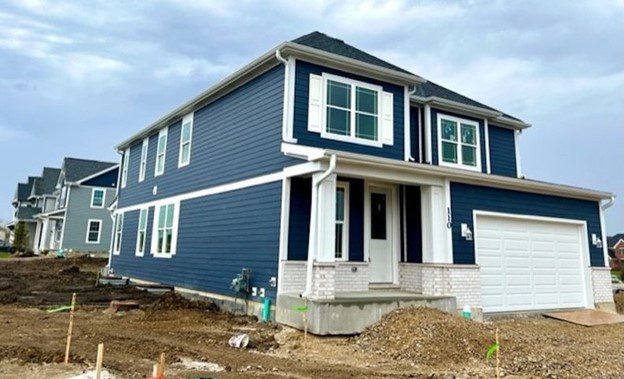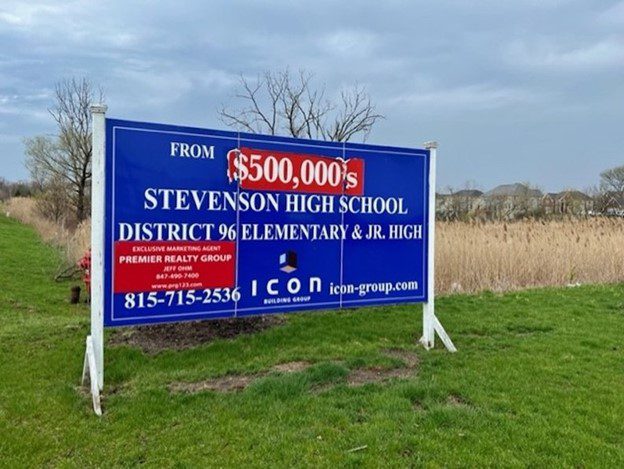The price increases since early 2021 are the biggest in at least 15 years, a response to both demand and the rising costs of supplies and labor.
Dennis Rodkin
Crain’s Chicago Business
May 02, 2022

New homes under construction at Quentin and Lake Zurich Roads in Hawthorn Woods.
Prices of new houses in the Chicago area rose by an average of $50,000 in the past year, largely because of voracious demand, according to a new report from a longtime consultant to the homebuilding industry.
One key reason is that “demand has been off the rails” said Charlie Murphy, president and CEO of Icon Building Group, based in Vernon Hills. “People have made a lot of money in this economy, and with low mortgage rates, we’ve had a good tailwind,” Murphy said.
The other reason, Murphy said, is that the cost of supplies and labor have risen sharply.
At Hawthorn Trails, Icon’s development on Quentin Road in Hawthorn Woods, a billboard touts prices “from $500,000s,” with the price sticker plainly plastered over an older price. A year ago, Murphy said, “it was 100 grand less.”
There are eight lots left to sell at the 37-unit development, Murphy said.

A sign at the Hawthorn Woods development shows prices have been changed.
Tracking sales at suburban developments, a report released April 30 by Schaumburg firm Tracy Cross & Associates found an average price increase of over 13%, or $50,000, between the first quarter of 2021 and the same time this year.
Added to a 19% increase in calendar year 2021, “these are the biggest price increases we’ve seen in 15 years,” said Erik Doersching, executive vice president at Cross.
The average price of new single-family homes sold by production builders in the first quarter of 2022 in the Chicago area was about $437,400, according to Cross, compared with about $396,000 a year earlier. That’s an increase of 10.5%.
The average price of all new-construction homes sold, including both houses and townhouses or condominiums, was nearly $499,000, up 12.4% from just under $444,000 a year earlier.
Builders sold 1,620 new homes during the first quarter. That was down 14.9% from the first quarter of 2021, which was the biggest sales quarter since the first three months of 2008. Thus, though the first quarter of this year saw a decline year over year, it was nevertheless “the second-strongest quarter since the first quarter of 2008,” Doersching said.
The low inventory of new homes for sale continues to hold back sales, Doersching said. Like many other sectors, new-home builders were caught unawares by the COVID-era housing boom and, because of a decade of dismal sales, did not have enough developments in the works to meet the spike in demand.
Inventory has only gotten tighter, even with the past two years’ runway for getting new homes going, Doersching said. In early 2021, there were 185 active developments, but by the same time this year, the number was down to 165.
Builders “started to catch up but they’ve been blitzing and sold out communities,” Doersching said. “They’re losing supply while demand is still strong.”
Both Doersching and Murphy said they expect the rise in interest rates that began at the dawn of the second quarter to slow things down in the new-construction market. Combined with a more stable supply chain, rising interest rates “should make prices level off,” Doersching said.
